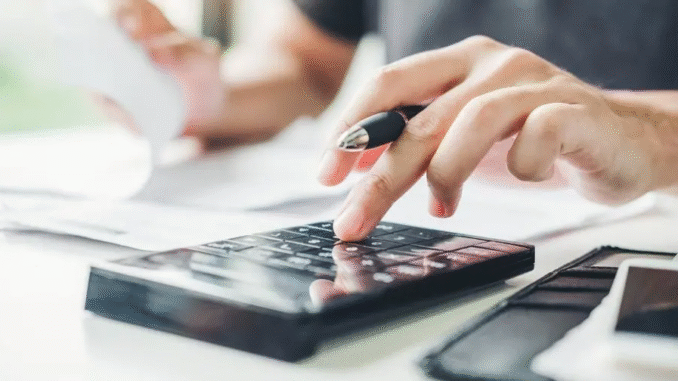
Beginner’s Guide to Budgeting: How to Take Control of Your Finances Today
Managing your money doesn’t have to be overwhelming or complicated. In fact, learning how to budget is one of the most powerful steps you can take to improve your financial future. Whether you’re trying to pay off debt, save for a big goal, or simply gain control over your spending, budgeting is the foundation of financial success.
This beginner’s guide will walk you through how to create a realistic budget, manage your expenses, and build habits that will help you take control of your finances starting today.
What Is a Budget and Why Do You Need One?
A budget is a spending plan that helps you manage your money by tracking income and expenses. It ensures you’re not spending more than you earn and allows you to allocate funds toward your goals—like saving for an emergency, paying off debt, or investing for the future.
Without a budget, it’s easy to lose track of where your money goes, leading to overspending, stress, and financial instability.
Step 1: Know Your Income
Start by figuring out your total monthly income. This includes:
- Salary or wages (after taxes)
- Side gigs or freelance income
- Government benefits
- Child support or alimony
- Any other reliable monthly earnings
If your income varies month-to-month, take an average of the last 3–6 months to get a better picture.
Step 2: Track Your Expenses
Next, you need to know exactly where your money is going. Look at your bank statements, credit card transactions, or use a budgeting app like Mint, YNAB (You Need a Budget), or EveryDollar.
Break your expenses into two categories:
Fixed Expenses (same amount every month)
- Rent or mortgage
- Utilities
- Internet
- Car payments
- Insurance premiums
- Loan payments
Variable Expenses (may change each month)
- Groceries
- Gas
- Dining out
- Entertainment
- Shopping
- Personal care
Tracking expenses for at least one full month will give you a clear picture of your spending habits.
Step 3: Set Financial Goals
Budgeting without goals is like driving without a destination. Set clear, achievable goals to stay motivated. These can include:
- Building a $1,000 emergency fund
- Paying off credit card debt
- Saving for a vacation
- Putting money toward retirement
- Starting a side business
Set both short-term goals (within 1 year) and long-term goals (1+ years). Then, use your budget to allocate money toward these goals consistently.
Step 4: Choose a Budgeting Method
There’s no one-size-fits-all budget. Choose a method that fits your lifestyle and financial situation. Here are three popular options:
1. 50/30/20 Rule
- 50% Needs – rent, groceries, utilities, transportation
- 30% Wants – dining out, shopping, entertainment
- 20% Savings & Debt Repayment – emergency fund, loan payments, investments
This is great for beginners looking for a simple, balanced approach.
2. Zero-Based Budgeting
Assign every dollar a job until your income minus expenses equals zero. You know exactly where each dollar is going. It’s perfect for people who want total control over their money.
3. Envelope System (Cash-Based)
Popularized by Dave Ramsey, this method involves putting cash into envelopes for each spending category. When the envelope is empty, you’re done spending in that category for the month.
Step 5: Create and Stick to Your Budget
Now it’s time to build your monthly budget. List your income and all your expenses, starting with your essentials. Allocate funds toward your fixed and variable expenses, and be sure to include a category for savings.
Tips to make your budget work:
- Be realistic with your numbers
- Build in a buffer for unexpected costs
- Review and adjust your budget weekly or monthly
- Use budgeting tools to automate tracking
Sticking to a budget requires discipline, especially in the beginning. But over time, it becomes a habit—and the results are worth it.
Step 6: Cut Unnecessary Expenses
Budgeting helps reveal areas where you’re overspending. You don’t have to give up everything you enjoy, but even small adjustments can lead to big savings.
Ideas to cut costs:
- Cancel unused subscriptions
- Cook at home more often
- Shop with a grocery list to avoid impulse buys
- Use cashback and coupon apps
- Switch to more affordable service providers
Freeing up even $100 a month can be redirected to savings or debt repayment.
Step 7: Build an Emergency Fund
Financial experts recommend having at least 3–6 months’ worth of expenses saved in an emergency fund. This protects you from unexpected events like job loss, car repairs, or medical bills.
Start small—aim for $500 to $1,000. Put it in a separate, high-yield savings account where it’s easily accessible but not too easy to spend.
Step 8: Pay Down Debt Strategically
Debt can hold back your financial progress. Once you’ve established your budget, commit to a plan to eliminate debt.
Two popular debt payoff methods:
- Snowball Method – Pay off the smallest debt first, then roll that payment into the next smallest.
- Avalanche Method – Focus on paying off the debt with the highest interest rate first (usually saves more money in the long run).
Whichever method you choose, consistency is key.
Step 9: Review and Adjust Regularly
Life changes, and so should your budget. Review it monthly to see what’s working and what isn’t. Did you overspend in one area? Can you increase your savings goal?
Being flexible ensures your budget continues to work for you—even as your income or priorities shift.
Step 10: Stay Motivated and Celebrate Progress
Budgeting is a journey, not a one-time task. Stay motivated by celebrating milestones—like paying off a credit card or reaching a savings goal.
Small rewards (that fit into your budget) can keep you focused and positive. Share your goals with a friend or partner to stay accountable.
Final Thoughts
Creating a budget isn’t about restriction—it’s about freedom. Freedom to make informed decisions. Freedom to build a secure future. And freedom to enjoy life without constant money stress.
Start small, be patient with yourself, and remember: every smart money move you make today brings you closer to financial freedom tomorrow.

